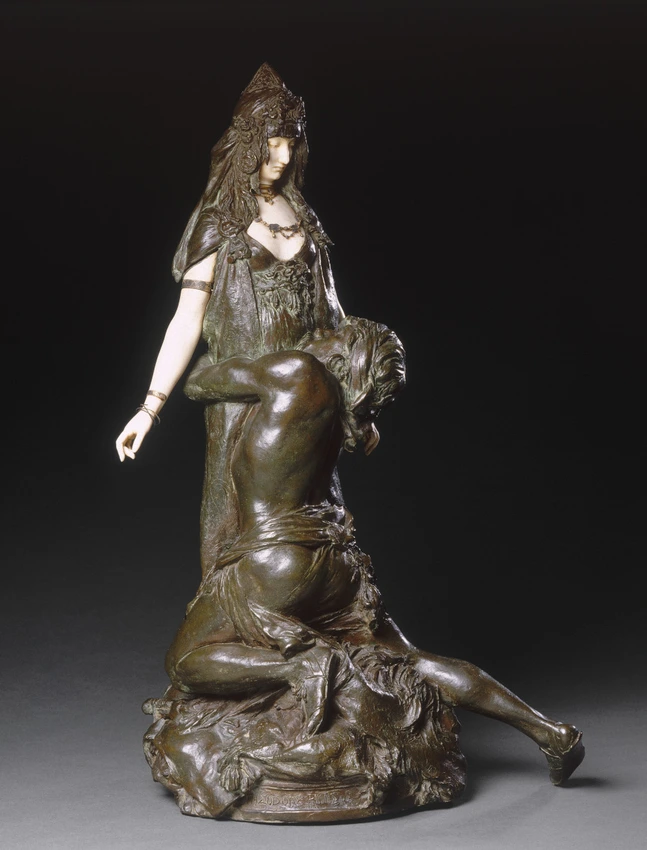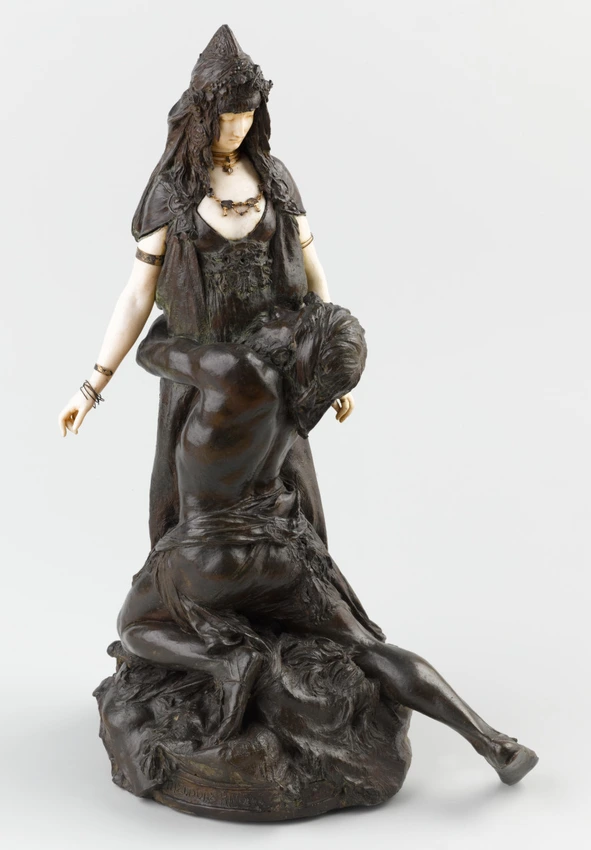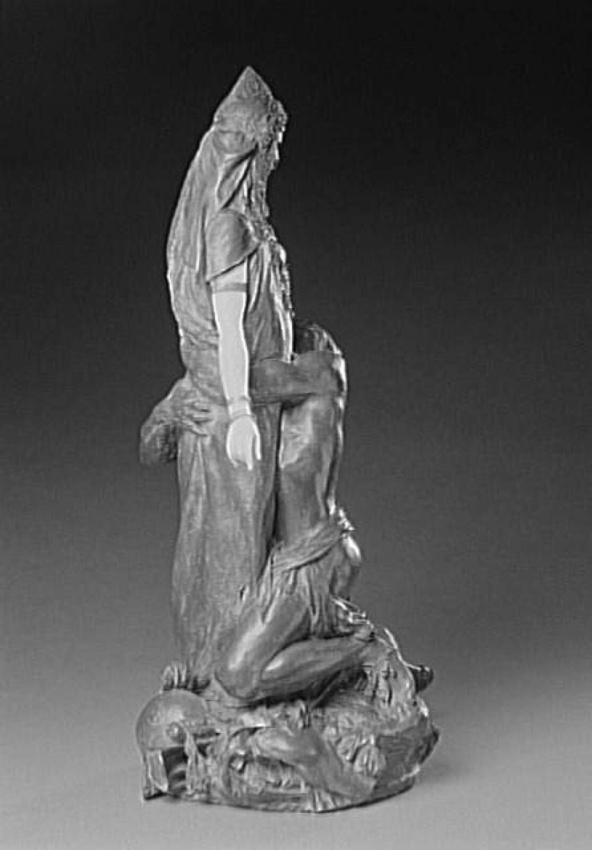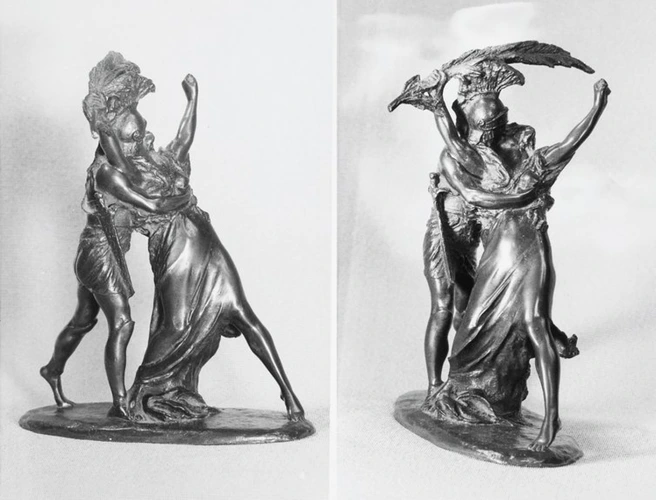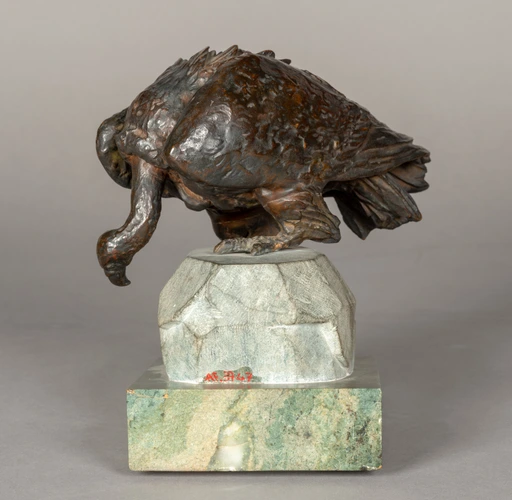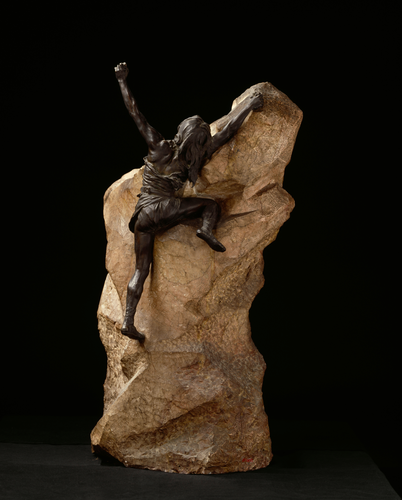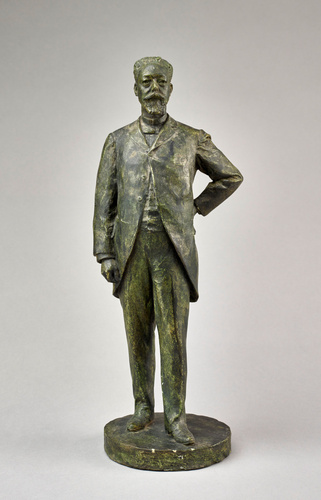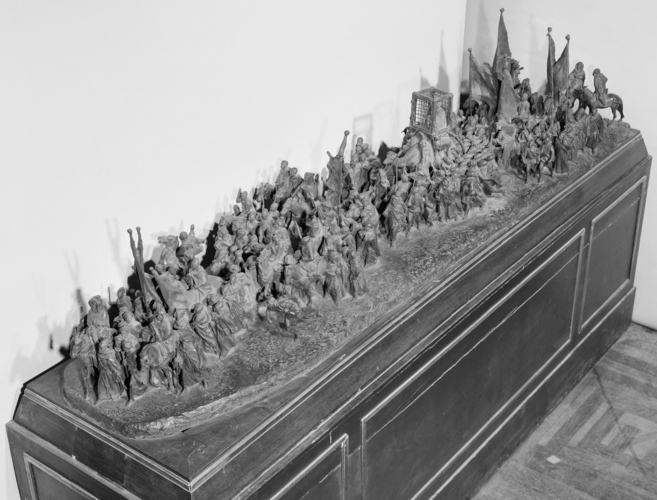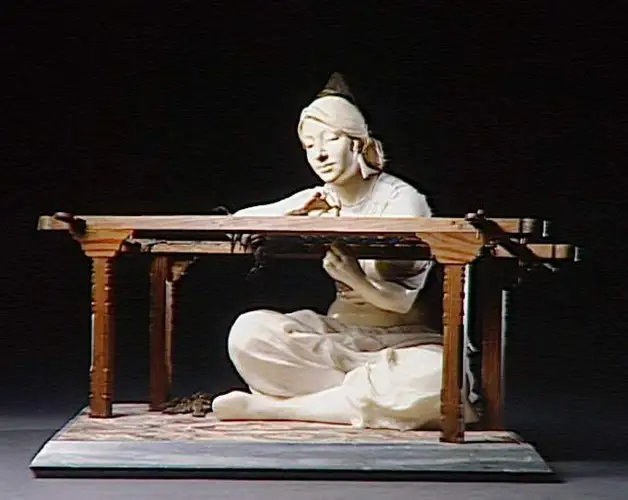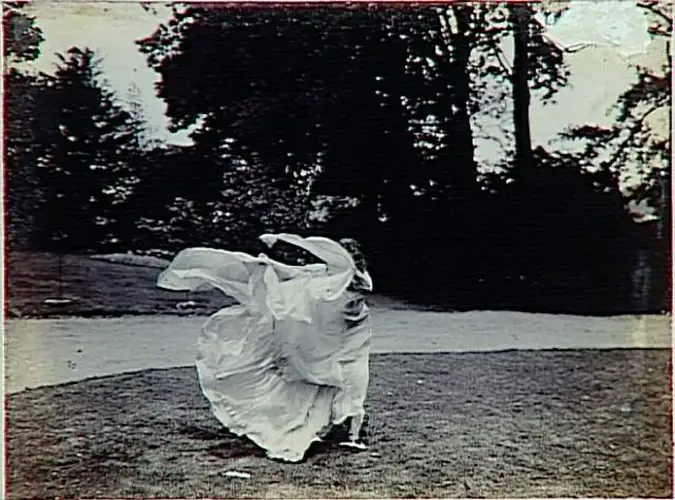Salammbô chez Mâtho, Je t'aime ! Je t'aime
Polychrome sculpture was very much in vogue in the 19th century, as can be seen in this Salammbo made of ivory, gold, bronze and turquoise. In this case, when gold and ivory are used together, we talk of "chryselephantine" sculpture.
Théodore Rivière was one of the leading Orientalist sculptors. He not only drew on literary texts but travelled extensively in North Africa, the Far East and South America.
The subject of this work was taken from Gustave Flaubert's novel, Salammbô, published in 1862. The story takes place between 241–238 BC, during the war between Carthage and its mercenaries in revolt. The Libyan Mâthô, the chief of the barbarian soldiers, fell in love with Salammbô, the daughter of his Carthaginian enemy Hamilcar Barca. Rivière has chosen the moment when, mortally wounded by the people, Mâthô dies at the feet of his idol crying: "I love you! I love you!" The figure of Salammbô, the femme fatale, inspired many other Symbolist artists.
This statuette created a sensation at the Salon of 1895. Many copies were made in bronze and biscuit, that is, matte white porcelain.
